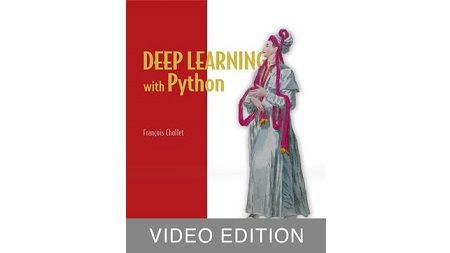
English | MP4 | AVC 1280×720 | AAC 44KHz 2ch | 9h 56m | 1.72 GB
Deep Learning with Python introduces the field of deep learning using the Python language and the powerful Keras library. Written by Keras creator and Google AI researcher François Chollet, this book builds your understanding through intuitive explanations and practical examples.
Machine learning has made remarkable progress in recent years. We went from near-unusable speech and image recognition, to near-human accuracy. We went from machines that couldn’t beat a serious Go player, to defeating a world champion. Behind this progress is deep learning—a combination of engineering advances, best practices, and theory that enables a wealth of previously impossible smart applications.
Inside:
- Deep learning from first principles
- Setting up your own deep-learning environment
- Image-classification models
- Deep learning for text and sequences
- Neural style transfer, text generation, and image generation
Table of Contents
01 What is deep learning
02 Learning representations from data
03 Understanding how deep learning works, in three figures
04 Don’t believe the short-term hype
05 Before deep learning – a brief history of machine learning
06 Decision trees, random forests, and gradient boosting machines
07 Why deep learning Why now
08 A new wave of investment
09 Before we begin – the mathematical building blocks of neural networks
10 Data representations for neural networks
11 Real-world examples of data tensors
12 The gears of neural networks – tensor operations
13 Tensor dot
14 The engine of neural networks – gradient-based optimization
15 Stochastic gradient descent
16 Looking back at our first example
17 Getting started with neural networks
18 Introduction to Keras
19 Setting up a deep-learning workstation
20 Classifying movie reviews – a binary classification example
21 Validating your approach
22 Classifying newswires – a multiclass classification example
23 Predicting house prices – a regression example
24 Fundamentals of machine learning
25 Evaluating machine-learning models
26 Data preprocessing, feature engineering, and feature learning
27 Overfitting and underfitting
28 Adding weight regularization
29 The universal workflow of machine learning
30 Developing a model that does better than a baseline
31 Deep learning for computer vision
32 The convolution operation
33 The max-pooling operation
34 Training a convnet from scratch on a small dataset
35 Data preprocessing
36 Using a pretrained convnet
37 Fine-tuning
38 Visualizing what convnets learn
39 Visualizing convnet filters
40 Deep learning for text and sequences
41 Using word embeddings
42 Putting it all together – from raw text to word embeddings
43 Understanding recurrent neural networks
44 Understanding the LSTM and GRU layers
45 Advanced use of recurrent neural networks
46 A common-sense, non-machine-learning baseline
47 Using recurrent dropout to fight overfitting
48 Going even further
49 Sequence processing with convnets
50 Combining CNNs and RNNs to process long sequences
51 Advanced deep-learning best practices
52 Multi-input models
53 Directed acyclic graphs of layers
54 Layer weight sharing
55 Inspecting and monitoring deep-learning models using Keras callba- acks and TensorBoard
56 Introduction to TensorBoard – the TensorFlow visualization framework
57 Getting the most out of your models
58 Hyperparameter optimization
59 Model ensembling
60 Generative deep learning
61 A brief history of generative recurrent networks
62 Implementing character-level LSTM text generation
63 DeepDream
64 Neural style transfer
65 Neural style transfer in Keras
66 Generating images with variational autoencoders
67 Variational autoencoders
68 Introduction to generative adversarial networks
69 A bag of tricks
70 Conclusions
71 How to think about deep learning
72 Key network architectures
73 The space of possibilities
74 The limitations of deep learning
75 Local generalization vs. extreme generalization
76 The future of deep learning
77 Automated machine learning
78 Staying up to date in a fast-moving field
Resolve the captcha to access the links!